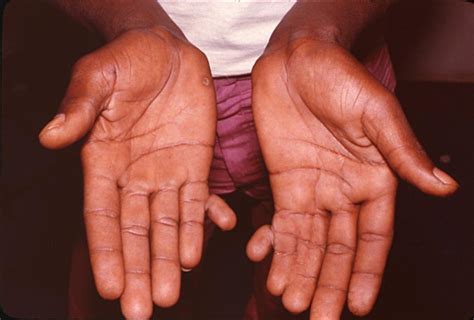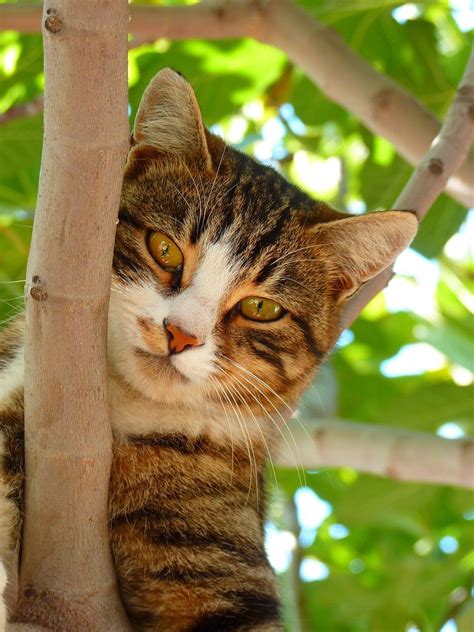Imagine a world where hands are not simply restricted to the five fingers we typically possess. Envision the possibility of having an additional digit, an extra extension of our dexterity. This intriguing concept, known as polydactyly, has captivated scientists, artists, and enthusiasts alike for centuries. Polydactyly, characterized by the presence of more than the customary number of fingers or toes, offers a unique perspective on human anatomy and challenges conventional notions of what it means to be "normal."
In this exploration of polydactyly, we embark on a remarkable journey to comprehend the intricacies and implications of having an additional digit. We delve into the allure of this peculiar phenomenon, lifting the curtain on its origins, cultural significance, and the diverse range of biological variations it encompasses. Polydactyly, often deemed an anomaly or a genetic mutation, reveals the incredible adaptability and diversity present within the human genetic makeup.
As we traverse through history, we encounter countless examples of polydactyl individuals who have left indelible imprints on society. From the legendary stories of ancient gods and mythical creatures with supernatural digits to the artistic depictions in various forms of creative expression, polydactyly emerges as a source of fascination and intrigue. Artists have often embraced the uniqueness of polydactyly, portraying it as a symbol of creativity, flexibility, and the ability to break free from the constraints of traditional norms.
The Historical and Cultural Significance of Polydactyly

Polydactyly, a phenomenon characterized by the presence of extra digits, has a rich history and holds cultural significance in various civilizations and societies throughout the ages. This unique anatomical trait has been the subject of fascination and intrigue, provoking diverse interpretations and beliefs among different cultures.
The historical records reveal instances of polydactyly being depicted in ancient artworks and artifacts, often associated with religious or mythical symbolism. For instance, various ancient civilizations, such as the Egyptians, Greeks, and Native American tribes, believed that individuals born with extra fingers or toes possessed supernatural or divine powers. Polydactyl individuals were revered as special beings with a closer connection to the spiritual realm, and their condition was seen as a divine blessing.
Furthermore, polydactyly has played a role in folklore and cultural practices. In some cultures, the presence of a supernumerary digit was considered to bring good fortune, fertility, or luck. This belief gave rise to customs and traditions that centered around the polydactyl individuals. In certain societies, they were sought after for marriage alliances or were revered as healers and sages due to their perceived connection with the supernatural. | On the other hand, polydactyly also faced stigmatization and discrimination in some societies. The presence of an extra finger or toe was often deemed as an abnormality or a sign of a curse. Polydactyl individuals were sometimes ostracized or feared, leading to their marginalization from mainstream society. |
Today, as our understanding of genetics and medical advancements progresses, polydactyly is viewed primarily as a benign anatomical variation. However, its historical significance and cultural interpretations serve as a reminder of the intricate relationship between human diversity, perception, and societal norms throughout history.
Uncovering the Ancient Origins of Polydactyly
Exploring the enigmatic history of polydactyly reveals a captivating journey into the ancient origins of this unique biological trait. Digging deep into the annals of human evolution, we uncover traces of polydactyly in ancient civilizations, ancient artwork, and even in the fossil records of our distant ancestors.
Examining the rich tapestry of human history, it becomes apparent that polydactyly is not merely a modern curiosity but an integral part of our ancestral heritage. From depictions in ancient cave paintings to written accounts in the scrolls of ancient civilizations, the presence of extra fingers and toes has intrigued and fascinated humanity since time immemorial.
Ancient cultures across the globe have left behind tantalizing clues and artifacts, providing glimpses into the pervasive presence of polydactyly throughout history. Whether seen as a divine blessing, a cursed anomaly, or a mark of distinction, polydactyly has shaped human perceptions and cultural beliefs throughout the ages.
By uncovering these ancient origins of polydactyly, we gain a deeper understanding of the biological mechanisms and genetic underpinnings that contribute to its manifestation. Through the study of ancient remains and DNA analysis, scientists have begun to unravel the complex web of genetic mutations that give rise to this intriguing phenomenon.
Unveiling the ancient origins of polydactyly not only provides insight into our shared evolutionary journey but also challenges prevailing notions of normalcy and diversity. This exploration invites us to appreciate the beauty and complexity of human variation, highlighting the remarkable diversity that exists within our own species.
Polydactyly in Different Cultures: Symbolism and Superstitions

The phenomenon of polydactyly, the presence of additional fingers or toes, has long captivated different cultures around the world. This unique attribute has been imbued with symbolic meanings and has been the subject of various superstitions in diverse societies.
In numerous cultures, polydactyly is seen as a symbol of good luck and prosperity. The presence of extra digits is believed to bring abundance and success in different aspects of life, including wealth, relationships, and fertility. It is often regarded as a special blessing and a sign of favor from the divine.
Conversely, in some cultures, polydactyly is associated with negative connotations and superstitions. It is believed to be a foreboding sign or a mark of misfortune. In these societies, individuals with extra fingers or toes may face stigma and discrimination, being considered "freaks" or outcasts.
Throughout history, polydactyly has also been linked to mystical and supernatural beliefs. Some cultures perceive those with additional digits as possessing extraordinary powers or abilities. They may be revered as healers, shamans, or individuals with heightened spiritual connections. These perceptions reflect the cultural diversity and imaginative interpretations surrounding polydactyly.
It is important to note that the significance and interpretations of polydactyly vary greatly from one culture to another. While some view it as a physical anomaly to be celebrated and embraced, others perceive it as a source of fear or curiosity. By exploring the symbolism and superstitions associated with polydactyly in different cultures, we gain insight into the intricate tapestry of human beliefs and the diverse ways in which we perceive and interpret the extraordinary aspects of our existence.
Exploring the Scientific and Medical Aspects of Polydactyly
In this section, we delve into the scientific and medical aspects of polydactyly, an intriguing genetic condition characterized by the presence of extra fingers or toes. We will be examining the various facets of this unique phenomenon, including its genetic causes, prevalence among different populations, and the potential medical implications it may have on individuals affected by it.
One of the key areas of focus will be the scientific exploration of the genetic mechanisms behind polydactyly. By understanding the underlying molecular processes, researchers aim to shed light on the specific genes and their interactions that contribute to the development of this condition. Through groundbreaking research, scientists have already made significant strides in uncovering the intricate genetic pathways involved and how alterations in these pathways can lead to the formation of extra digits.
Another aspect that will be discussed is the prevalence of polydactyly in different ethnic groups and populations across the world. By examining the data and statistics available, we can gain insights into the prevalence rates, potential geographic influences, and the inheritance patterns of polydactyly. Additionally, we will explore the role of genetic and environmental factors in the development of this condition, providing a comprehensive understanding of its occurrence.
Furthermore, the medical implications of polydactyly will be explored in this section. While polydactyly is often considered a harmless condition and embraced by some cultures as a unique trait, it can present challenges and considerations in terms of hand and foot function, as well as potential social and psychological impacts. We will delve into the medical interventions available to individuals with polydactyly, such as surgical procedures, prosthetics, and rehabilitation techniques that aim to optimize limb functionality and improve quality of life.
In conclusion, this section aims to provide a thorough examination of the scientific and medical aspects surrounding polydactyly. By delving into the intricate genetic mechanisms, prevalence rates, and medical implications, we can gain a deeper understanding of this fascinating condition and its broader implications in the fields of genetics and medicine.
FAQ
What is polydactyly?
Polydactyly is a condition in which a person is born with more than the usual number of fingers or toes.
How common is polydactyly?
Polydactyly is relatively rare, occurring in about 1 in every 1,000 live births.
What causes polydactyly?
Polydactyly is usually caused by genetic mutations or abnormalities during fetal development.



